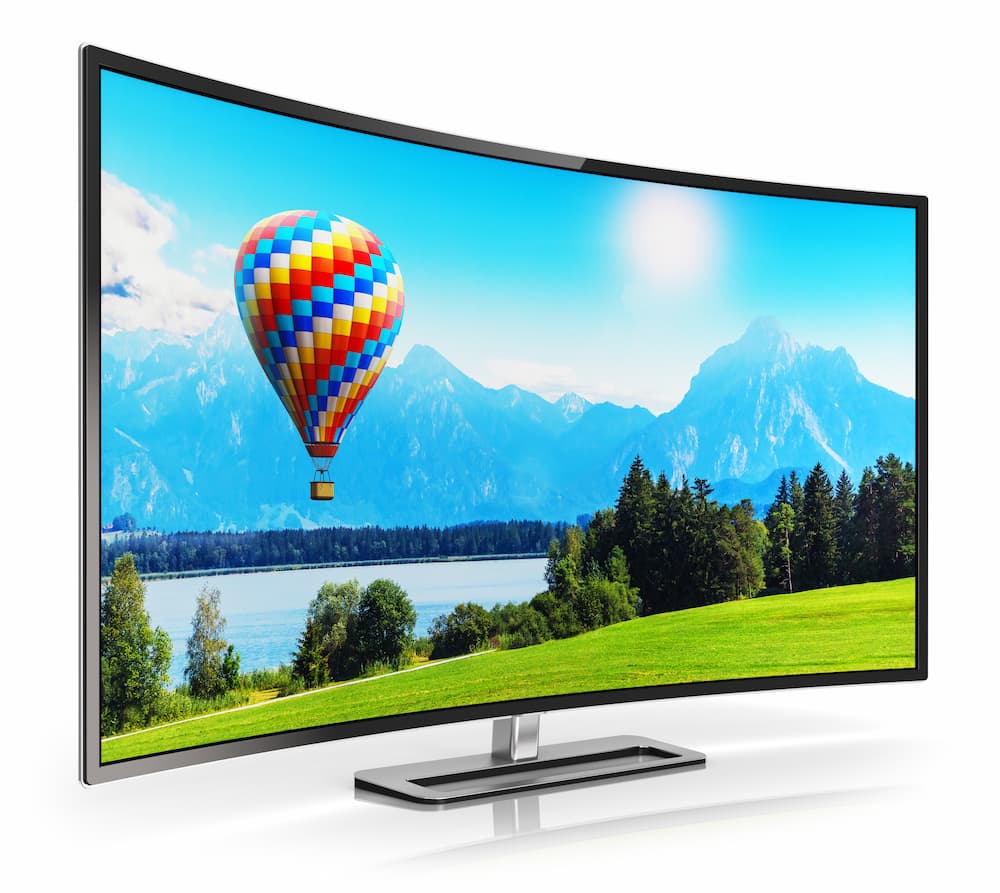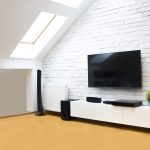After reading our blog post on QLED and OLED TVs, you’ll know:
-
- What QLED means and why some people prefer it over OLED
- What OLED means and why some people prefer it over QLED
- Who to ask if you have any questions about maximizing your TVs video and audio performance
While the only difference in their name is the tail of the letter Q, these QLED and OLED screen technologies are actually quite different. Without knowing your specific needs, it’s hard to hail either one as superior. However, by putting them side by side and comparing each one against the other, the map to your new TV will be illuminated by its brightly lit screen.
What is OLED?
Before launching into the battle of OLED and QLED, it may help to talk about a third acronym first: LCD. LCD stands for liquid-crystal display, and it’s long been the dominant screen technology for flat-panel TVs, computer monitors, and mobile devices. LCD screens are made up of pixels and sub-pixels, and behind them is an LED backlight that emits a polarized light through the pixels. The pattern of light and which colored subpixel is activated at a certain time will create the image on the screen.
Despite having LED in its name, OLED operates differently than LCD screens. OLED, which stands for organic light-emitting diode, uses the pixels themselves to emit light. That is, there is no backlight. This allows for OLED displays to be incredibly thin, even as thin as several pieces of typical printer paper.
While LCD screens have dominated the display marketplace for years, OLED displays are definitely giving them a run for their money, especially when it comes to high-end TVs. Many popular brands, like Huawei, Panasonic, Philips, Sony, and Vizio, used OLED technology in their displays. However, most of the OLED screen panels are manufactured by LG before being shipped and used as components in these other brands.
What is QLED?
While OLED can be seen as a new technology distinct from LCD TVs, QLED is more of an evolution. QLED, which stands for quantum-dot light-emitting diode, still uses a backlight. However, between the backlight and the screen’s final layer sits a film containing quantum dots. These quantum dots are essentially microscopic molecules that, when lit by the backlight, then emit their own, colored light. The light then filters through multiple layers, including the traditional liquid crystal display, to finally create the image you see on the TV screen.
Samsung created the QLED technology and has been using it in their own TV since 2015, though they only started referring to this technology as “QLED” in 2017. QLED isn’t quite as popular as OLED, but Samsung is working to change that by bringing in other brands, such as Hisense, TCL, and Vizio, to further improve the technology and market QLED displays throughout the world.
OLED vs. QLED
To put the technological comparison simply: OLEDs use pixels that emit their own light while QLEDs use the traditional backlight and add another layer of technology. Both options lead to incredibly improved image quality when compared to the previous generation of displays. However, depending on the size of your preferred TV screen, what you intend to watch on it, and your budget, you may find that one screen technology better fits your needs than the other.
OLEDs Advantages
In terms of pure picture quality, it’s hard to beat OLED screens. As these screens use their pixels to emit light as opposed to a backlight, that means that when the image calls for pure black, you’ll get as close to pure black on the screen as possible. QLED screens, with their backlights, will always let a little light through, while the pixels of the OLED screen will shut off when black is called for. This means no light is let through and helps to create a true black.
The image quality of OLED screens also tends to remain the same regardless of your viewing angle. Even if you’re watching the screen from far off to the side, you shouldn’t notice a significant difference in brightness, contrast, or color, and that’s if you notice a difference at all.
OLEDs Disadvantages
If you’re looking for the best possible screen regardless of its price, you’ll likely have a variety of OLED TVs on your wishlist. That’s because while OLED technology is advanced, it’s also limited. As an entirely new technology, you just don’t have the range of screen size options as you do with QLED. While there are rumors of LG manufacturing an 83-inch OLED screen later in 2021, currently there are only five OLED size options available:
-
- 48-inch
- 55-inch
- 65-inch
- 77-inch
- 88-inch
So, if you’re looking for a budget-friendly TV to fit into a spare room, kitchen, or somewhere else where size may be a luxury, you probably won’t find an OLED option. Additionally, when you compare the cost of OLED screens to their similarly sized QLED cousins, you’ll find that OLED screens are far more expensive.
QLEDs Advantages
The image quality of QLED screens tends to vary. If you purchase a QLED screen with all the fixings, such as mini-LED backlights and full-array local dimming zones, you’ll end up with a picture quality that truly impresses even when it’s compared to a similar OLED screen. When you take into consideration the cost difference, that means that a full-featured QLED screen will tend to give you a bigger bang for your buck.
QLED screens can also usually get brighter than OLED ones. So, if you are going to put your TV in a room that tends to get a lot of natural light, then a QLED Screen may be preferable.
As QLEDs are based on commonplace LCDs, that means you’ll also find a wide range of screen size options that contain quantum dot technology. You should be able to find ones as small as 32-inches and as large as 98-inches.
QLEDs Disadvantages
While features like full-array local dimming zones and mini-LED backlights can boost the image quality of QLED screens, they’ll never quite outpace the picture an OLED produces. Those features aren’t always included, though, so you can easily end up with a QLED screen that is far lacking when compared to an OLED one.
To put it bluntly: QLEDs are an excellent choice for those on a budget or looking to add a decent TV to a spare bedroom or other small space. However, if you’re looking for the best image quality and price is not a consideration, it’s probably a mistake to opt for anything other than a premium OLED television.
Get The Most Out of Your TV with Performance Audio
Performance Audio has spent over four decades designing, installing, and maintaining video and audio entertainment systems in homes and businesses throughout the San Francisco area. Since our founding, we’ve expanded from entertainment systems to include home networking and smart home security, too. Our goal is to maximize the performance of your entertainment electronics and smart home system.
Our team is filled with trained, skilled technicians and professional support personnel who prioritize our customers’ needs above all else. Check out how we can help you get the most from your TV and give us a contact us today at 415-441-6220.
Featured Image: Oleksiy Mark/Shutterstock





